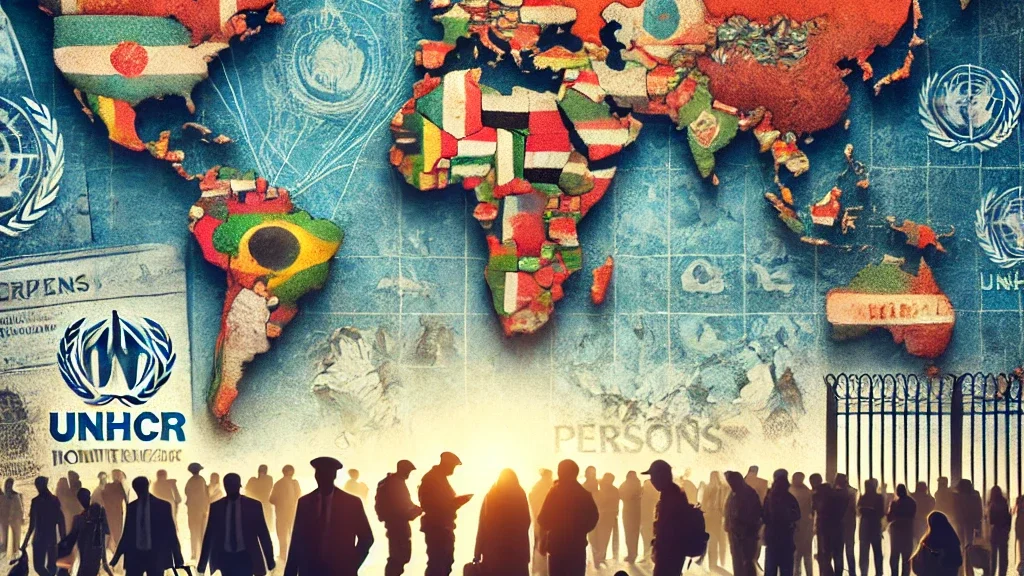Overview: Rights of Stateless Persons in Global Migration

Mar. 07, 2025 • Nandini Shaw
Student's Pen
Rights of Stateless Persons in Global Migration
Abstract:
This blog explores the plight of stateless individuals within the context of global migration, focusing on the legal challenges they face, particularly regarding their rights and access to international protections. The article examines the legal frameworks designed to safeguard stateless persons, including the 1954 Convention Relating to the Status of Stateless Persons, and assesses their effectiveness. Key questions include how global migration laws address the specific needs of stateless individuals and the gaps that exist in providing them with adequate protection. The article concludes by proposing solutions to ensure better protection and inclusion of stateless persons in migration policies.
Introduction:
Statelessness remains one of the most significant challenges in global migration. Stateless individuals are those who are not recognized as nationals by any state, often leading to severe restrictions on their rights and freedoms. This issue is particularly relevant as migration flows increase and the protection of human rights becomes a central theme in international law. The article investigates the complexities of statelessness within global migration frameworks, focusing on legal protections, the rights of stateless persons, and the challenges they face in accessing citizenship, healthcare, and other basic rights. The main question addressed is how can existing international frameworks be strengthened to provide better protection for stateless persons?
Background:
Statelessness is a multifaceted issue with deep-rooted causes, including conflicts, discriminatory nationality laws, and gaps in international legal instruments. The 1954 Convention Relating to the Status of Stateless Persons is a key international treaty designed to protect stateless individuals, outlining their rights and the obligations of state parties. Despite this, many stateless persons remain in limbo due to a lack of awareness, inadequate implementation, or failure by states to adhere to these obligations. Stateless persons often lack access to education, employment, and healthcare, further exacerbating their vulnerability.
Section 1:
Legal Protections for Stateless Persons This section examines international legal frameworks, such as the 1954 and 1961 Conventions, which offer some protection to stateless individuals. The 1961 Convention on the Reduction of Statelessness aims to prevent and reduce statelessness, particularly in situations of state succession or changes in nationality laws. Key cases, such as Khdar v. France (1998), shed light on how courts interpret and apply these legal provisions to protect stateless migrants. Despite these frameworks, challenges remain in ensuring that states comply with international obligations, and many stateless individuals continue to face legal and practical barriers to securing basic rights.
Section 2:
Challenges in Accessing Rights and Citizenship Statelessness often intersects with issues of citizenship, nationality, and migration, creating a legal gray area for individuals who may be excluded from regular nationality processes. In many cases, stateless individuals are unable to acquire citizenship in any country, leaving them vulnerable to exploitation, abuse, and discrimination. This section highlights the challenges faced by stateless persons, including lack of access to employment, education, and healthcare, and explores how migration policies inadvertently exacerbate these vulnerabilities. Case studies from countries like Myanmar and Sri Lanka illustrate how statelessness impacts migrant communities.
Section 3:
Reforming the Legal Frameworks In this section, the article discusses possible reforms to improve the rights of stateless persons within global migration. The article argues for stronger enforcement mechanisms of international treaties, better cooperation among states to ensure universal access to nationality, and the development of alternative solutions like “local integration” policies. The importance of creating national laws that provide pathways to citizenship for stateless persons is also emphasized. A discussion on the role of international organizations like the UNHCR and advocacy groups in addressing statelessness concludes this section.
Discussion:
The blog identifies that while there are existing legal protections for stateless persons, they are often insufficient or poorly implemented. The lack of global coordination and the political challenges involved in recognizing the rights of stateless persons make it difficult to address their needs comprehensively. The discussion emphasizes the need for reforms in both international legal frameworks and national laws, particularly focusing on reducing the causes of statelessness and improving access to nationality for affected individuals. A more inclusive migration policy framework that takes into account the specific needs of stateless persons can promote human dignity and equality.
Conclusion:
The issue of statelessness in global migration is a critical human rights challenge. While there are some international legal protections, there is a need for reform to address the gaps in protection and enforcement. By strengthening international cooperation and legal frameworks and developing policies to facilitate the inclusion of stateless persons in national systems, we can help provide a more just and equitable approach to the migration of stateless individuals. Ensuring their access to rights such as education, employment, and citizenship is crucial for promoting human dignity and reducing their vulnerability in a rapidly changing global landscape.